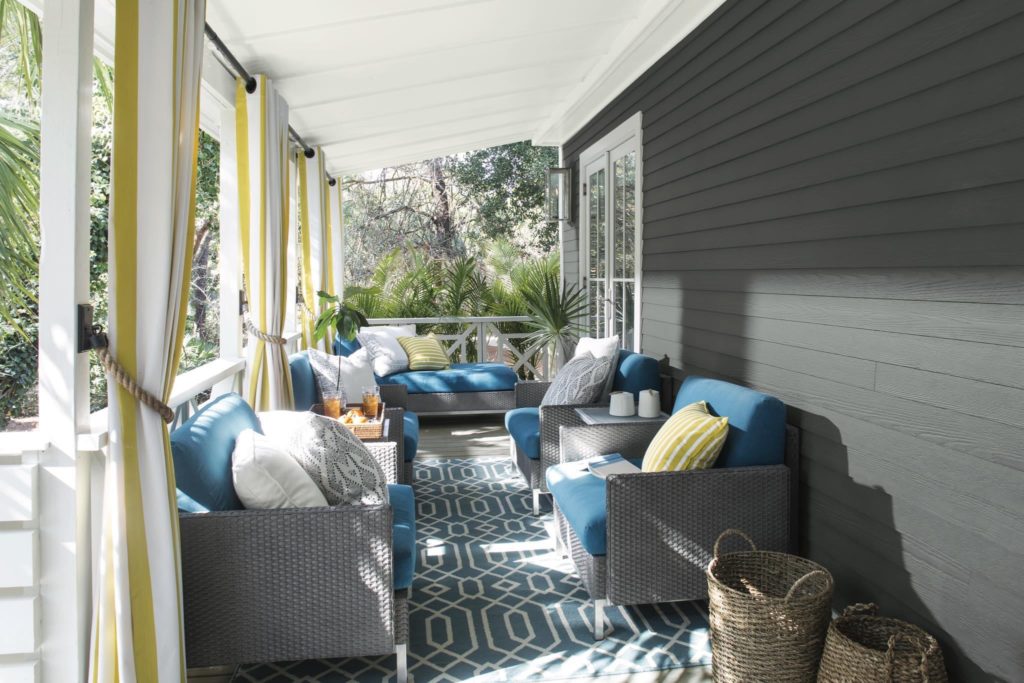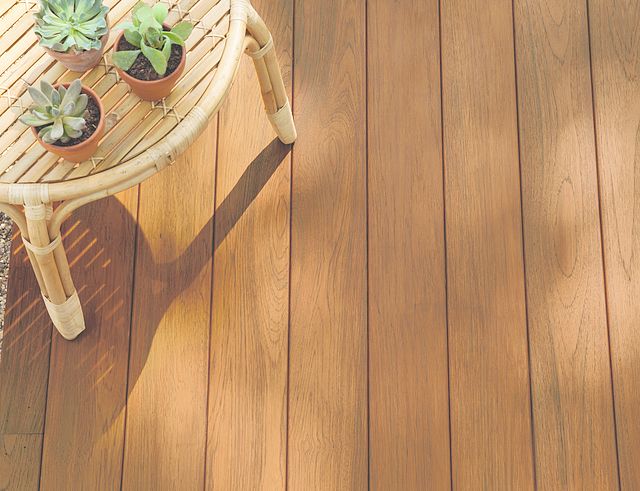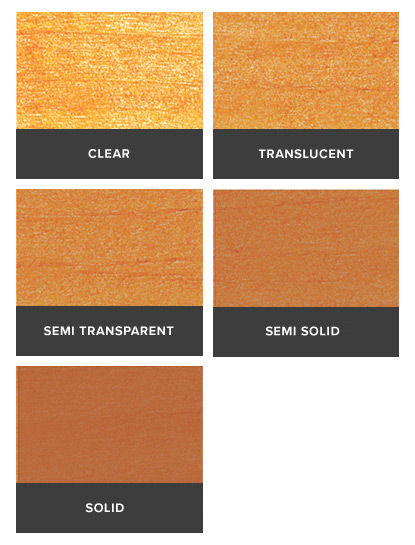We’re officially in the heat of summer and the busiest painting season. Painting contractors and homeowners alike are hard at work freshening up the exteriors of home (e.g. shingle siding, decks + porches, sheds, etc). If you’re like most, you have some pretty substantial time at home due to COVID-19.
(Let me first say, we are thankful to have remained open and available to serve you throughout this unexpected season.)
Regardless of which project you’re tackling this summer, we’re sharing a few tips and tricks for exterior staining.

Step One: Clean
Before we get to exterior staining, we’ve got to make sure everything is good and clean. If you see any spots of mold or mildew on your wood, make sure you wash it away with bleach and detergent. Our favorite house cleaner is Mold Armor— it’s ready to use with a pump sprayer and rinses away in 10 minutes for a bright and clean surface.
A tried-and-true homemade method of washing your deck or siding is scrubbing away surface debris with TSP + bleach and a good scrub brush.
Recipe:
- One part powdered TSP
- One part bleach
- Eight parts warm water
Practice safety precautions and protect your skin and eyes. We recommend wearing gloves while working with this mixture, and if you have plants nearby, hose them down with water before you start working near them.
Step Two: Prep
This next step is by far the most important. It’s not everyone’s favorite part of the process, but it is necessary! Depending on the condition of the wood you’re staining, preparation will vary.
New wood: lightly sand the surface to break the mill glaze, then vacuum or wipe with tack cloth.
Mill glaze the shiny effect made by blades during the milling process, which keeps stain from soaking into the wood.
Weathered bare wood: the best thing you can do here is use an electric sander to clear away the gray, weathered fibers of wood. Once the wood begins to look fresh, make sure there is no dust left on the surface. You may also use a pressure washer to remove the grayed wood fibers, but make sure you allow the wood to dry fully (at least a week) before you stain.
Weathered stained/painted wood: the previous coating has to come off, whether you use a pressure washer, electric sander, scraper, or liquid paint remover. Once you have bare wood again, lightly sand to keep it fresh and clear away the dust.
Now you’re ready to start staining!
Step Three: Choose Your Exterior Stain
Maybe you’re not quite ready to start staining yet. First, you’ve got to find the right one for your project! Not all stains are made equal. Select from oil- or water-based stains in a translucent up to solid opacity. All these terms may sound like gibberish, but don’t worry, we’ll break it all down for you.
Oil-based vs Water-based Stains
There are pros and cons to everything, especially exterior stains. While oil-based is better at conditioning the wood and require less upkeep, it is also more prone to mildew. If your home is shaded most of the day with pretty high moisture, oil-based stains aren’t ideal for you. Water-based stains are less-likely to grow mildew and resist color fading from the sun much better. However, they tend to be higher maintenance than oil-based products.
Another key element to consider is dry time. Are you having a party this weekend and you still haven’t touched the deck? Water-based stains dry to the touch in an hour or less, making them suitable for quick projects. Plus, they emit lower odors. Ultimately, you will have to weigh the benefits of each and determine which one is best for you and your home.
Opacity
Once you have decided between oil- and water-based stains, you’ll decide on the opacity, or how much natural wood you want to see through the stain coating.
Translucent has the least amount of pigment and allows for the natural wood tone to shine through. Benjamin Moore’s Arborcoat classic oil finish translucent stain is one of our favorites for new decks and siding. The subtle pigment helps pop the natural colors of the wood. There are 7 ready-made classic wood tones by Benjamin Moore.
Semi-transparent adds a little more color to the surface of the wood. If your siding looks a little uneven, this is for you. It will help to even out minor blemishes and color variation while maintaining a mostly natural appearance.
Semi-solid gets you closer to a full color without going completely solid. Again, this is a great option for the deck or siding that’s aged or you just want fuller UV coverage. Semi-solid and semi-transparent are tintable to select 75 classic exterior colors.
Solid stain is similar to paint in that it has a fully opaque appearance. However, it still has the adherence qualities of a stain. Benjamin Moore’s Arborcoat solid stain is a water-based full coverage stain that is available in all 3,600+ colors.
Color
As mentioned above, Benjamin Moore’s Arborcoat comes in a variety of opacities. Depending on which one you choose, your color options vary. Select from 7 ready-made Translucent colors— Natural, Redwood, Teak, Cedar, Mahogany, Mahogany Flame, and Silver Gray.
Semi-transparent and semi-solid are custom tinted to 75 classic exterior shades and Solid is available in all 3,600+ colors by Benjamin Moore (and even competitors colors!). You can view the full collection of Arborcoat colors here.
Step Four: Stain
By now, you should have cleaned and prepared your deck or siding (or furniture), selected which type of stain is right for your project, and picked out the color. Now, let’s get to work!
At Wilmot’s, we love and recommend a block stain brush. Stain-Eze and Stain-N-Seal brushes are high capacity, smooth bristle brushed made for staining large surfaces. They are 4” wide and 1” thick for even coverage. You can buy these at either store for $15.99.
For efficiency’s sake, you can also roll your stain on with a 1/2” or thicker roller, then back-brush to smooth it out.
And as always, stop in or give us a call with any and every question you have about staining. We’re here to help!

